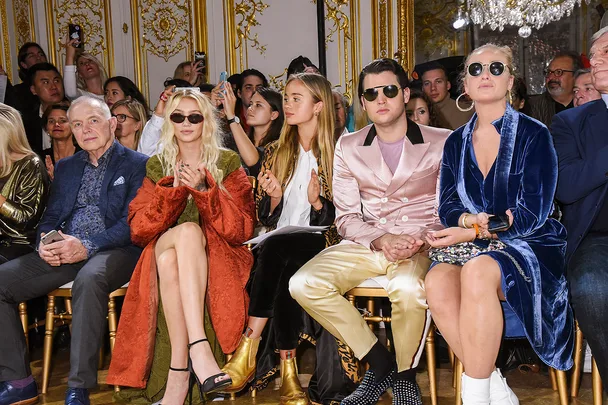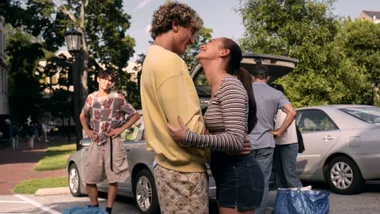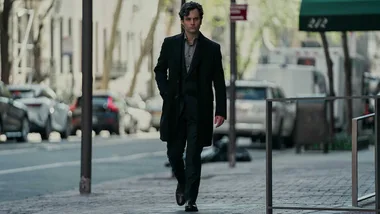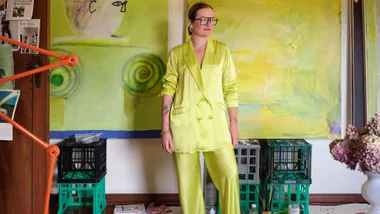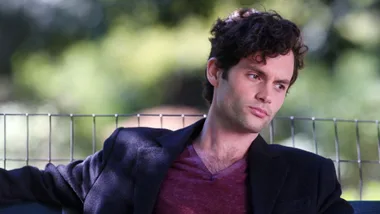There’s a scene in The Crown when Princess Margaret, rebellious younger sister of the Queen, simmers and scowls through a photo shoot with famed photographer Cecil Beaton. “Cecil does one thing – fairytales,” she complains to her mother, as she adjusts her tiara and fluffs her frothy tulle skirt. It’s Margaret’s 29th birthday and her portrait, poised and rigid, is set to be released to the world.
For Lady Amelia Windsor, granddaughter of Princess Margaret’s cousin, dispensing an image to the masses is an entirely different proposition. She glosses her lips, takes out her iPhone and snaps a selfie. Lounging at Lake Como here; arriving at the New York opera there; and dressed in a never-ending stream of Dior and Dolce & Gabbana.
Welcome to the age of the Instagram-aristocrat, where frivolity trumps formality and publicity reigns over privacy. Lady Amelia Windsor represents the new breed of nobility, a crop of blue-blooded 20-somethings who broadcast every decadent detail of their lives on social media.
Leading the genetically-blessed pack is Lady Kitty Spencer, Princess Diana’s bombshell niece whose high-fashion turn at Harry and Meghan’s wedding almost stole the show. With 460k followers, her Instagram page is like a diary of her glittering exploits, from modelling in Milan to hosting charity lunches and jetting around the globe (most recently she graced Australian shores for the Telethon in Perth). Then there’s Princess Maria-Olympia of Greece and Denmark, who shares a personal collage of cocktails, castles and Cartier, mixed with food shots (dumplings) and arty black-and-white photos.
Not stifled by the rules or responsibility of their top-tier relatives, these bright young things are offering a never-before-seen insight into their lavish lifestyles. And we can’t get enough.
The royals have always been rockstars of sorts: Richard the Lionheart was a sword-wielding warrior, Queen Victoria amassed admirers for her fearless fashion, and Princess Diana was so beloved by the public that her sudden death in 1997 triggered a period of disillusionment with the British monarchy. It wasn’t until the 2011 wedding of her son William and commoner Catherine Middleton that popularity soared once more, sparking a move into modernity for the centuries-old institution.
In April 2016, Buckingham Palace announced it was hiring a head of digital engagement to help boost its online profile. Since then, @kensingtonroyal – the official Instagram account of William, Kate, Harry and Meghan – has swelled to 6.4 million followers, while @theroyalfamily – which focuses more on the Queen – boasts 3.5 million. Both offer a glorious peek behind the royal curtain: videos of the Queen’s beloved corgis; extra portraits from baby Louis’ christening; and candid snaps of Meghan and Harry laughing with Invictus Games competitors.
“A clear benefit of social media is its instantaneous nature,” says royal biographer Ingrid Seward, whose latest book, My Husband and I (Simon & Schuster, $45), explores the Queen’s 70-year marriage. “The Palace can control when information is being released – wedding dress designers, baby names – and where it’s going.” For a family who have had a notoriously tense relationship with the press, it’s an opportunity for them to frame their own narrative.
Because, like any influencer worth their likes, the Windsors’ social media performance is anything but improvised. Months before marrying Harry, Meghan Markle quietly shut down her lifestyle blog and social accounts, deemed inappropriate for a duchess. Soon after, Princess Eugenie became the first senior royal to publicly join Instagram, offering people a personal, but decidedly unglossy, insight into her life (this was reportedly permitted because despite being ninth in-line to the throne, she doesn’t carry out official duties or receive an allowance from the privy purse).
But it’s further down the line of succession where aristocratic accounts really start to sparkle – not that sharing (or oversharing) comes without controversy. Upper-crusters such as Princess Maria-Olympia and Pauline Ducruet of Monaco have raised eyebrows for littering their feeds with less-than-regal behaviour: topless bikini photos, arty puffs of cigarette smoke and raised middle fingers. Perhaps most controversial was Lady Amelia Windsor’s foray into #sponcon, a photo of her taking in the Spanish sunset in a drapey summer dress captioned with “paid partnership with Michael Kors”.
Is the Queen clutching her pearls? These royal influencers believe the sense of privacy she’s worked so hard to protect; with every offhand Insta-story, that air of mystery evaporates. “She may not like it, but there’s little she can do and she realises that,” says Seward. “And she’s always believed in moving with the times to keep the monarchy relevant.”
Of course, any attempt to bring Britain’s oldest establishment into the now will stir up contradictions of palace-size proportions. Namely, the purpose of social media, especially among high-profile celebrities, is often to communicate a sense of relatability – but these couture-clad aristocrats do the opposite, revealing today’s royals are less accessible than ever. And maybe that’s why we love them.
Back in The Crown, the Queen Mother coaxes Margaret as she begrudgingly poses for her portrait. “No-one wants complexity and reality from [you] … People have enough of that in their own lives. They want us to help them escape.”
This article originally appeared in the December 2018 issue of marie claire Australia.
